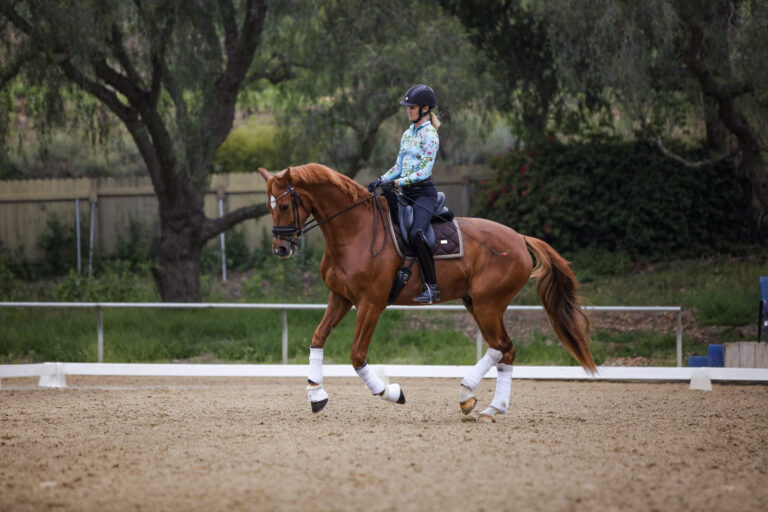Q: My horse is quite unyielding on the left side of his mouth although he doesn’t stick out his tongue. He chews and foams only on the right side of the bit. The dentist sees him regularly and there are no problems. How can I get him soft on the left side? —Ally Booker of Carrolton, Texas
A: You are correct to check the medical aspect first. The fact that you have dental work done on a regular basis means you can, with clear conscience, now address this as a training issue.
Horses, like humans, usually favor one side of their body over the other. As we are more comfortable on either the left or right, so our equine counterparts can be stiffer on one side than the other. Generally, the stiff side is, as you mentioned, clamped or rigid in the jaw and feels inflexible and unyielding. It is important to understand that the side of his jaw that appears soft is not necessarily truly supple but most likely a way of avoiding contact on that rein.

In your case, the goal now is to shift his balance off the left side and on to the right. This can be done with several different exercises.
My favorite is to use a large turn on the forehand exercise. To soften the left side, you would go counterclockwise on a small circle in the walk. There are several things to remember in this exercise:
1. You want to shift your horse’s left shoulder to the right, continuing the counterclockwise movement. You don’t want this as an on the spot turn on the forehand, but rather keep his front legs on a smaller circle than his hind legs.
2. In traveling on a larger circle with the hind legs, the left hind leg will need to cross over the right. For a horse that doesn’t like to go sideways, these crossing steps actually will help the balance shift into the outside rein and soften the inside rein (thus loosening the left jaw). For a horse that steps sideways easily, you must channel him forward to the bit while his right hind leg crosses the left.
3. Once you feel him chewing and softening, use the whip lightly on his left hind leg to initiate the trot. If you simply squeeze your legs to get him to trot, it can be like squeezing a tube of toothpaste in the middle—some energy goes out the front, but some goes out the back. You want all the energy in front of you, so if you initiate the trot with the whip, he’ll take a clearer, more definitive step from behind. Using the whip is not a forever exercise, just something to give him some basic help.
4. Don’t forget, the emphasis is on shifting his shoulders from leaning left. Asking for activity of the left hind leg while using the reins to move the shoulders needs to be a coordinated effort. You may need to use the left rein as an indirect rein to help push or guide the left shoulder over to the right. Again, simultaneously use your left leg to move your horse’s left hind leg sideways to cross over the right. When this is done correctly, you will then feel weight in your right rein. You may need to open the right rein to maintain the contact on the right. Weight in the right rein should take some pressure off the left and, if the exercise is accomplished correctly, should make him:
• chew the left side of the bit
• come up in his withers and shoulders and
• have some honest contact into the right rein.
Any exercises that move his shoulders from left to right and move his weight off his left side are very valuable. Leg yield right, haunches in left and renvers left will all help.
Interestingly enough, I have noticed this issue of left/right sidedness to be breed oriented. Although there are always exceptions, I feel that most warmbloods are stiff to the left while most other breeds tend to be stiff to the right. Another interesting point is that when you take the stiff side of a horse and get it more bendable and supple, it actually tends to be the more honest side because it is actually the straighter side. The direction that seems easily bendable (in your case to the right) is actually the more dishonest side. Even though exercises to the right might seem easy to accomplish, you have to watch constantly that the shoulders don’t fall left. This means anything with right positioning (right circles, turning right, leg yield left, shoulder-in right, etc.) needs to be carefully monitored because the horse will always want to overposition that side.
Very few horses have natural bilateral balance and suppleness. So it is our job as riders to direct and guide our horses to the best balance that they can achieve.

Fran (Dearing) Kehr is a USDF “S” judge and received the Region 9 Teaching Excellence Award from The Dressage Foundation in 2014. She is the owner and trainer at Windy Knoll Farm in Houston, Texas.











